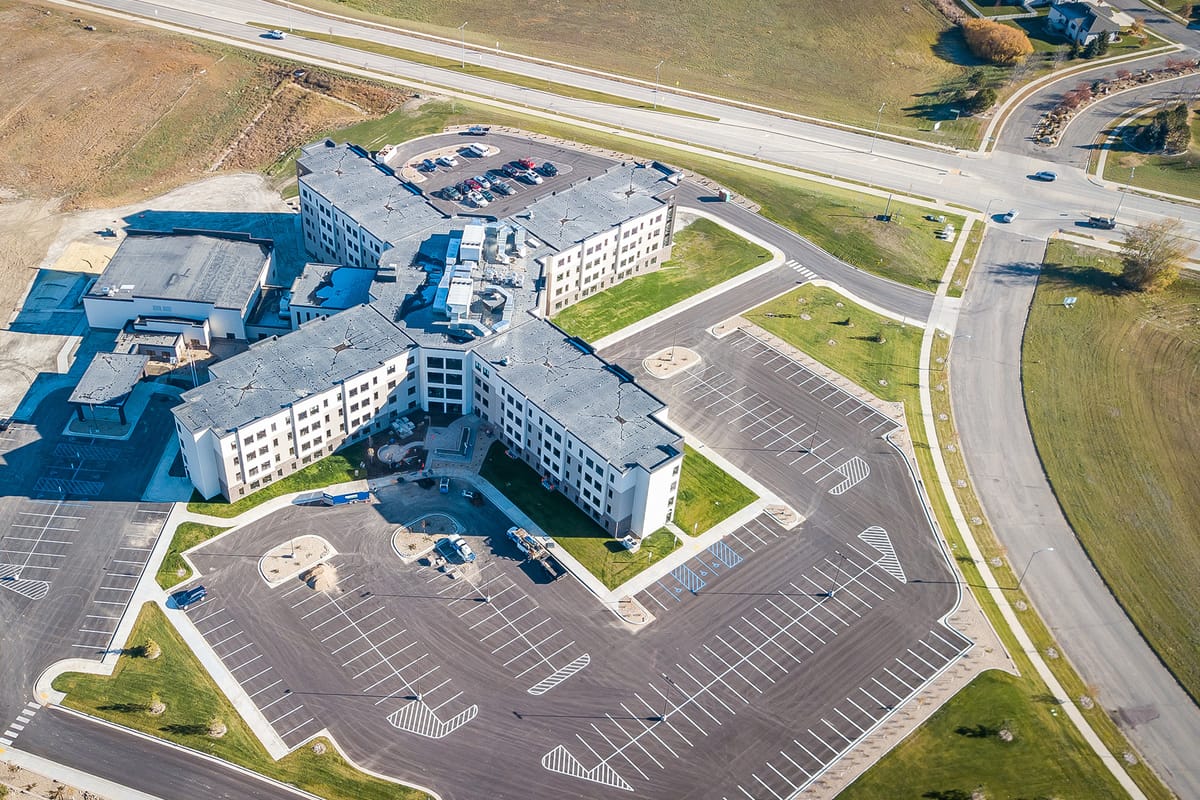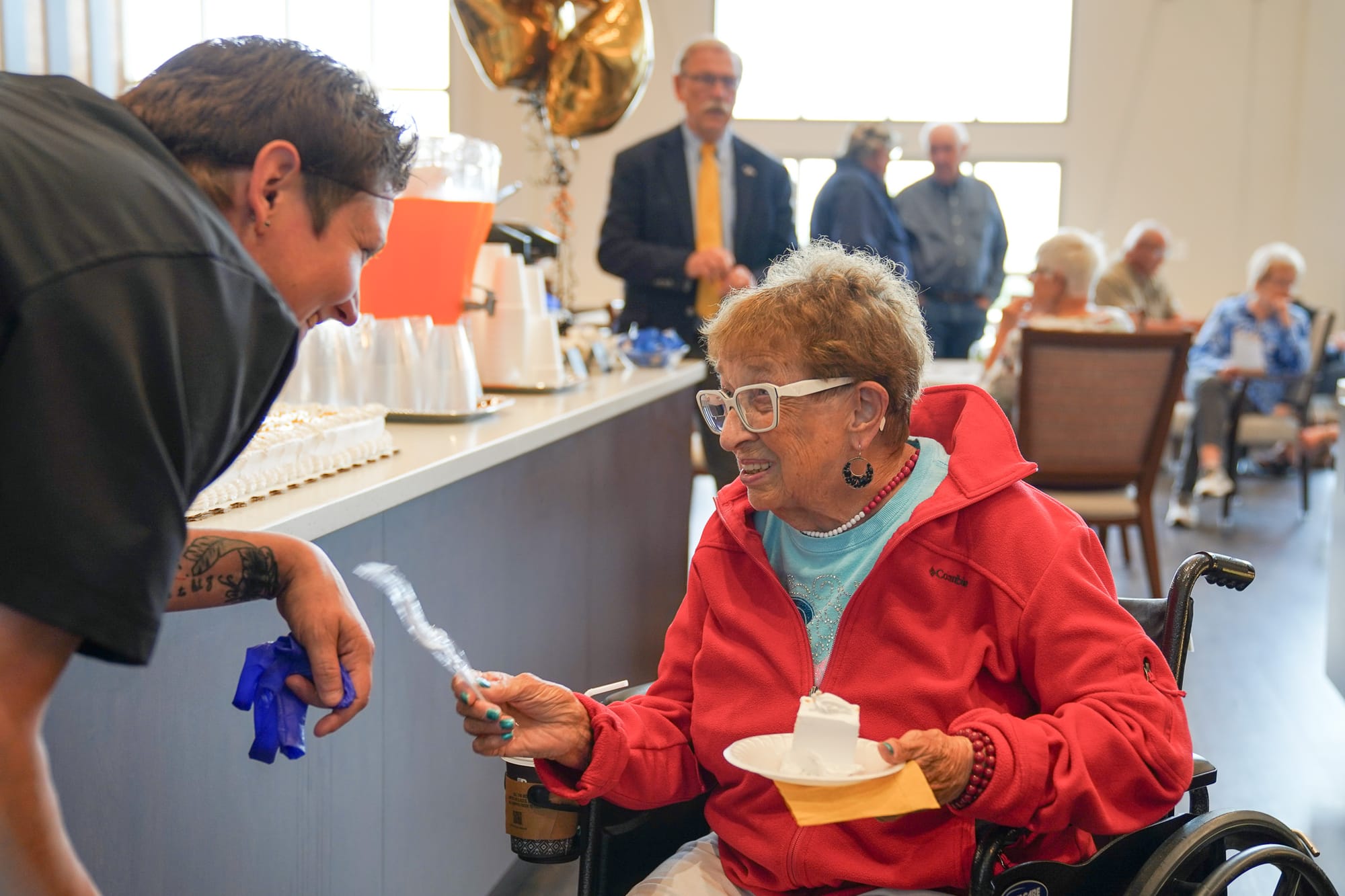Pressures could lead to more closures at ND nursing homes
Federal requirements, travel nurse expenses, immigration freeze a challenge

Federal requirements for nursing homes to have a registered nurse (RN) on duty 24 hours each day are expected to add pressure to an already challenging workforce situation for the 75 rural and urban facilities across the state.
A majority will have a hard time meeting the 24/7 requirement for RNs, according to the North Dakota Long Term Care Association (NDLTCA).
Nikki Wegner, director of the NDLTCA, said most facilities across the state are now currently well-staffed except for that RN requirement.
Cost pressures have already led to six facilities closing in the past 35 months, she said.
“We’ve never had that before in our history and the majority of them were because of staffing issues,” Wegner said.
Urban facilities have until May 2026 to comply with the federal requirements while those in rural areas have until May 2027.
Rules have also changed, with areas like Dickinson, Devils Lake, Jamestown, Valley City and Williston no longer considered rural, meaning they’ll need to meet requirements sooner.
“I worry about how many facilities might have to close because they can’t meet the standards,” said Reier Thompson, president and CEO of Missouri Slope in Bismarck which has long-term care for over 250 residents.
“What’s that going to do to access to care, especially in the more rural area, where people are traveling 100 miles from their hometown to a nursing facility, and maybe a spouse is commuting that a couple times a week,” Thompson said. “It’s going to be hard, especially in winter.”
Costs rising
Throughout the COVID-19 pandemic, staffing full-time nurses and nursing assistants at long-term care facilities became a huge challenge. Many turned to short-term contract nurses, and costs soared.
The situation has begun to turn around for Jill Foertsch, administrator at St. Gerard’s Community of Care in Hankinson. St. Gerard’s has added new certified nursing assistants (CNAs) while reducing the use of contract nurses from eight just a short time ago to two.
“We have improved significantly,” Foertsch said.
That being said, finding enough RNs to meet the new requirement is going to be tough.
“We are not able to meet the 24/7 staffing mandate,” Foertsch said.
The situation may mirror what happened during the pandemic, but contract RNs are in short supply and high priced, she said.
The one caveat is this time there’s no funding on the horizon.
“We will not be getting any help from the government like we did during COVID and that’ll be what would most likely help us to shut down, because it’s just not sustainable that way,” Foertsch said.
The NDLTCA estimates contract nurses accounted for around $73 million of statewide nursing costs in 2023, up from around $24 million in 2020.
Staffing at nursing homes in the state is also now around 1,200 workers below what it was in early 2020 numbers, according to the NDLTCA.
Pressure building
The NDLTCA estimated that only 35 percent of urban facilities and only 14 percent of rural facilities would currently meet the future 24/7 RN staffing requirement.
Right now, most facilities rely on a mix of RNs, physician’s assistants, nurse practitioners or physicians through phone or telehealth if an RN isn’t on duty beyond the normal daytime shift. Finding RNs to fill overnight and other shifts is going to be difficult.
No funding is earmarked for those shortfalls, the numbers of RNs are just not available, and no pipeline is in the works to increase the availability of RNs.
“We’re still in a workforce crisis, we still rely on a lot of contract nurses and its expensive, and then you add the mandate on there to increase even more,” Wegner said, adding that the state needs at least 80 if not more RNs to fulfill the mandates.

Several states have already met stringent requirements for waivers from the rule, but Wegner isn’t hopeful North Dakota will qualify.
Blake Kragnes, administrator at the 85-bed Knife River Care Center in Beulah, said his nursing home has been able to keep staffing at a good level, but the mandate of the 24/7 requirement for RNs is going to be tough to meet.
“When you look at the number of college grads graduating with a nursing and RN degree, it’s down, and that makes it complicated to meet a mandate that comes with no funding,” Kragnes said.
Kragnes is looking at how to increase recruitment and retention by connecting with area high schools to start people in a health care career that may lead them to full-time registered nursing status.
Foreign nurse visa freeze
One avenue most facilities are trying to use is immigration, but the U.S. State Department recently froze EB-3 visas used by foreign nurses for the rest of the fiscal year, leaving around 10,000 foreign nurses in limbo until resolved.
A cap of 40,000 visas for foreign nurses has been in place since 1990 and legislation to increase the cap stalled in the U.S. Congress after its introduction in November 2023.
According to the Migration Policy Institute, international nurses account for around 16 percent of the nursing workforce in the country.
National healthcare nonprofit KFF, formerly known as The Kaiser Family Foundation, estimates that one in six of the 3.2 million RNs in the U.S. is an immigrant nurse.
Amy Kreidt administrator of St. Luke’s Home in Dickinson, which operates an 88-bed long-term care facility, echoed Foertch’s comments by saying the mandate coupled with the high cost of contract nursing could put more rural nursing homes out of business.
“Right now we’re not (in danger of closing), but if we can’t start getting nurses here, we have to keep that as an option and review,” Kreidt said.
St. Luke’s has had success with its foreign nurses but the visa freezes and annual caps, along with the complicated immigration process, has led to it taking up to four years to get foreign nurses, Kreidt said.
“And that’s if it goes through relatively quickly, and it seems to always have taken that long, but now, with additional delays, it will continue to take that long and longer,” Kreidt said. “The contact is only three years long and it takes over four years to get them, so the numbers don’t add up,” Kreidt said.
LeAnn Hokanson, vice president of resident services at Missouri Slope, said besides funding to cover nursing costs, there is a major need for both immigration and on expanding nursing programs.
“The (foreign nurses) that we've been interviewing most recently, they've been waiting and waiting and waiting,” she said. “Some of them wait for 10 years to get their call to have a facility interview them. It's all stuck in that visa process.”
Kreidt has previously tapped into the nursing program at Dickinson State University, but with its entire full-time nursing faculty resigning on July 10 the future of that program is uncertain.
The situation also adds further uncertainty regarding the nursing pipeline for healthcare facilities across the state and region.
North Dakota’s new Office of Legal Immigration is looking to pilot a cap-exempt H-1B visa program in the next several months specifically for foreign nurses, according to a study it released in late May.
This could help increase the numbers of RNs and nurse practitioners (NPs), though hurdles exist since the H-1B immigration process is more costly and facilities need to meet eligibility requirements.
The North Dakota News Cooperative is a non-profit news organization providing reliable and independent reporting on issues and events that impact the lives of North Dakotans. The organization increases the public’s access to quality journalism and advances news literacy across the state. For more information about NDNC or to make a charitable contribution, please visit newscoopnd.org.



